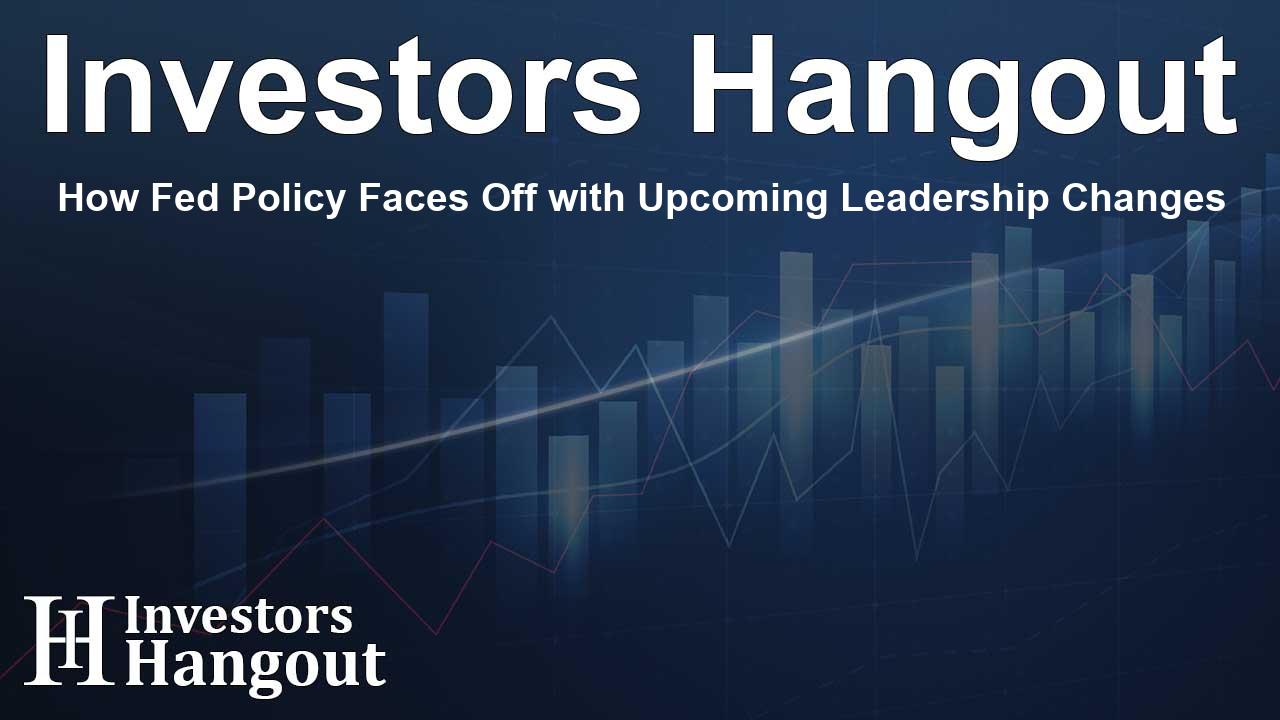How Fed Policy Faces Off with Upcoming Leadership Changes

Navigating the Uncertain Bond Market and Federal Reserve Policy
In a rapidly evolving financial landscape, the challenges facing the Federal Reserve are manifold. As they strive to tackle rising long-term inflation fears, they also contend with the pressures from the new political climate. The situation remains complex, particularly with growth in U.S. Treasury borrowing rates becoming increasingly pronounced.
The bond market is signaling a shift into precarious territory, prompting the Fed to navigate its strategy carefully. Chief among the warnings is the notable resurgence of a risk premium in the longer-dated U.S. government debt. This development represents a shift in investor sentiment about future inflation and government fiscal policies.
The Return of Term Premiums
The term premium, which measures the additional compensation required for holding long-term bonds compared to short-term ones, has not been present in the market for over a decade. Recently, the New York Federal Reserve highlighted an uptick in this premium, with estimates indicating it has crossed the half-percentage-point mark for the first time since several years ago.
While a 50-basis-point risk premium may be considered moderate in historical context, it contrasts starkly with the average seen over the last decade. This growing gap suggests deep-rooted investor hesitation regarding consistent inflation and the ongoing accumulation of government debt.
Understanding the Influence of Fiscal Policies
This investor uncertainty can largely be attributed to a combination of steep budget deficits paired with an economy that is still teeming with vitality. This combination, juxtaposed with anticipated policy changes from the incoming leadership, raises pertinent questions about fiscal outlooks such as tax cuts and potential tariffs.
Recent movements in debt metrics further illustrate this predicament. Despite the Fed having lowered its policy rate decisively, longer-term Treasury yields have seen substantial increases—notably a hundred basis points on the 10-year bond and even steeper increases on the 30-year yield, pushing toward levels unseen since earlier financial disruptions.
Prospect of Fed Policy Adjustments
Given the Fed's evident struggle to manage the long-end of the bond market, it faces the pressing need to pivot toward a more hawkish stance to fulfill its inflation targets. However, this adaptation may not align conveniently with the expectations set forth by the new administration.
Statements from Fed Governor Christopher Waller indicate the Federal Reserve acknowledges the increasingly complex dynamics at play, suggesting that navigating this environment is not only challenging but perhaps eludes even the best forecasts. The likelihood of potential economic policies could lead to escalated predictions concerning Fed actions if these strategies deviate sharply.
Bond Investor Expectations in Transition
The future could unfold through one of two pathways: either the Fed may hasten rate reductions in alignment with the expectations set by the incoming leadership, or it might adopt a wait-and-see approach, aiming to contain inflation expectations steadfastly.
However, the Fed's inherent mandate to stabilize inflation expectations means it cannot easily forgo these developments, particularly amid pressures that could result from proposed changes in government spending and taxation by the administration.
Impacts on Market Stability and Investor Behavior
The ongoing turbulence surrounding anticipated policies—for instance, adjustments in taxation and immigration—could amplify inflation and put further strain on the already delicate market. Without a cohesive strategy from the new administration to manage borrowing rates perceived as excessively high, the Fed might find itself in a difficult position.
The months ahead promise significant market fluctuations as both investors and policymakers grapple with uncertainty. Clarifying the relationship between the long-term bond yields and the Fed’s objectives could offer a valuable foundation for more stable economic management.
Frequently Asked Questions
What challenges does the Federal Reserve currently face?
The Federal Reserve is confronted with the dilemma of balancing long-term inflation fears against political pressures from the new leadership, requiring careful navigation of monetary policy.
What is the term premium, and why is it significant?
The term premium is the additional yield required by investors to hold long-term bonds. Its recent resurgence indicates increasing investor concerns about inflation and fiscal policy.
How does the Fed’s policy affect Treasury yields?
The Fed's monetary policy directly influences Treasury yields; however, external factors like inflation expectations can lead to substantial changes in yields independent of Fed actions.
What implications do potential policy shifts by the new administration have?
Incoming political decisions regarding taxation and spending can significantly impact inflation and investor confidence, complicating the Fed's task of maintaining stable economic conditions.
How might the Fed respond to increasing market unpredictability?
The Fed may adopt a more cautious approach, possibly refraining from further rate cuts unless there is a compelling economic justification, as it seeks to uphold its inflation targets.
About The Author
Contact Evelyn Baker privately here. Or send an email with ATTN: Evelyn Baker as the subject to contact@investorshangout.com.
About Investors Hangout
Investors Hangout is a leading online stock forum for financial discussion and learning, offering a wide range of free tools and resources. It draws in traders of all levels, who exchange market knowledge, investigate trading tactics, and keep an eye on industry developments in real time. Featuring financial articles, stock message boards, quotes, charts, company profiles, and live news updates. Through cooperative learning and a wealth of informational resources, it helps users from novices creating their first portfolios to experts honing their techniques. Join Investors Hangout today: https://investorshangout.com/
The content of this article is based on factual, publicly available information and does not represent legal, financial, or investment advice. Investors Hangout does not offer financial advice, and the author is not a licensed financial advisor. Consult a qualified advisor before making any financial or investment decisions based on this article. This article should not be considered advice to purchase, sell, or hold any securities or other investments. If any of the material provided here is inaccurate, please contact us for corrections.
